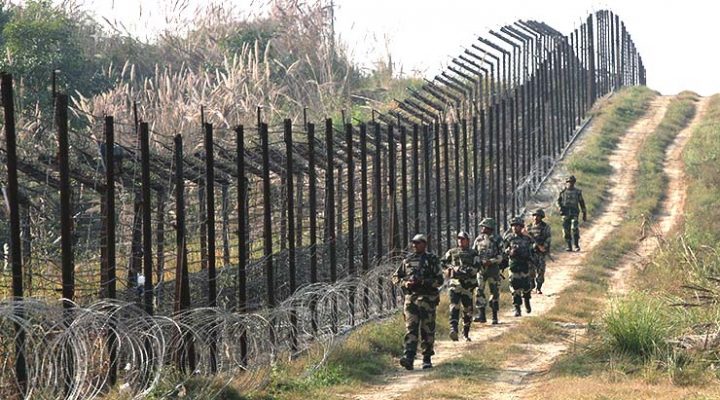
New Delhi: There have been 3,186 incidents of Ceasefire Violations along Line of Control (LoC) in Jammu region in this year from January 1 to September 7. Besides, 242 incidents of cross-border firing have occurred along Indo-Pak International Border in Jammu region in this year from January 1 to August 31.
There have been eight fatal casualties and two non-fatal casualties of Army personnel in Jammu and Kashmir this year till September 7. In addition, there have been five non-fatal casualties of BSF personnel along International Border and Line of Control in Jammu and Kashmir, Rajya Sabha was told on September 14.
Appropriate retaliation to the ceasefire violations, as required, has been carried out by Indian Army and BSF. In addition, all the cases of ceasefire violations are taken up with Pakistan authorities through the established mechanisms of hotlines, flag meetings, Directorate General of Military Operations (DGMO) talks as well as diplomatic channels between the two countries.
In reply to another question, Minister of State (MoS) for Defence Shripad Naik said an amount of Rs 90,048 crore has been allocated for Capital Acquisition (Modernisation) in Budget Estimate (BE) 2020-21 under Defence Service Estimates which is an increase of Rs 9,088.92 crore over BE 2019-20 allocations. The total amount allocated for Capital Acquisition (Modernisation) is 27.87 per cent of Defence Services Estimates.
Government is taking measures for modernisation of Armed Forces, through procurement of new equipment and upgrading of existing equipment and systems. The modernisation projects are being progressed as per approved capital acquisition plan and in terms of extant Defence Procurement Procedure (DPP).
Government has brought in significant reforms to promote FDI in defence sector in the country, to complement and supplement the domestic investment. Through FDI, domestic companies are benefitted by way of enhanced access to supplementary capital and state-of-art-technologies, and also exposure to global managerial practices resulting in employment generation and accelerated growth of the sector. Review of FDI policy is an ongoing process and changes are made in the FDI policy regime, from time to time, to ensure that India remains an attractive investment destination, Naik said.
The Government in May 2020 announced that the FDI limit in Defence Production will be raised to 74 per cent from existing 49 per cent under Automatic Route as part of the reform in defence sector to boost self-reliance. It has been proposed to enhance the FDI in Defence Sector up to 74 per cent through the Automatic Route for companies seeking new defence industrial license and up to 100 per cent by Government Route wherever it is likely to result in access to modern technology.
The obligatory government approval for existing FDI approval holders and current defence licensees for change in equity or shareholding pattern up to 49 per cent FDI has been proposed to be replaced with mandatory declaration for the same within 30 days of change of equity or shareholding pattern. The proposals for raising FDI beyond 49 per cent from such companies could be considered with Government approval. This is being notified by Ministry of Commerce and Industry.
The Government has taken the following policy initiatives to promote ‘Make in India’ in defence sector including a new category of capital procurement ‘Buy {Indian-IDDM (Indigenously Designed, Developed and Manufactured)}’ in Defence Procurement Procedure (DPP)-2016 to promote indigenous design and development of defence equipment. It has been accorded top most priority for procurement of capital equipment.
Under ‘Atmanirbhar Bharat’ campaign, Ministry of Defence (MoD) has prepared a list of 101 items for which there would be an embargo on the import beyond the timeline indicated against them. This would offer a great opportunity to the Indian defence industry to manufacture these items using their own design and development capabilities to meet the requirements of the Armed Forces in the coming years.
This list includes some high technology weapon systems like artillery guns, assault rifles, corvettes, sonar systems, transport aircraft, light combat helicopters (LCHs), radars and many other items to fulfill the needs of our Defence Services.








